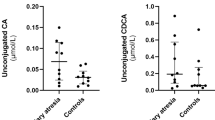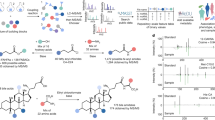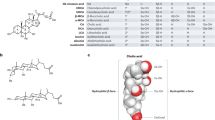Abstract
As part of a general investigation into the nature of the ‘bile salts' of vertebrates, we have examined the bile of a whale. So far as we know, no work on the ‘bile salts' of cetaceans has previously been done. Through the kindness of Dr. M. Begg, of "Discovery" Investigations, we obtained bile from the fin whale (Balcenoptera physalus) : 3,000 ml. bile were collected from either the duodenum or the ‘third stomach' of a single whale, and preserved with alcohol. The main biliary constituent has been found to be cholic acid, conjugated, apparently, chiefly with taurine. The chief ‘bile salt' in this animal therefore resembles that of the teleostean fish, snakes and the majority of mammals so far investigated.
This is a preview of subscription content, access via your institution
Access options
Subscribe to this journal
Receive 51 print issues and online access
$199.00 per year
only $3.90 per issue
Buy this article
- Purchase on SpringerLink
- Instant access to full article PDF
Prices may be subject to local taxes which are calculated during checkout
Similar content being viewed by others
Author information
Authors and Affiliations
Rights and permissions
About this article
Cite this article
HASLEWOOD, G., WOOTTON, V. Bile Acids of the Whale. Nature 161, 356 (1948). https://doi.org/10.1038/161356a0
Issue date:
DOI: https://doi.org/10.1038/161356a0



